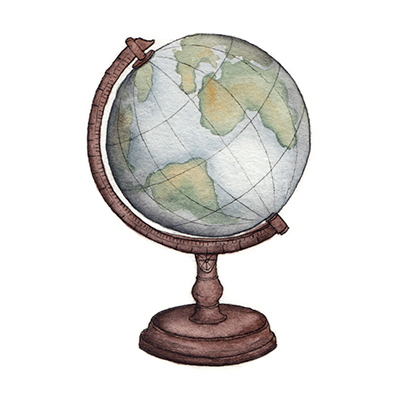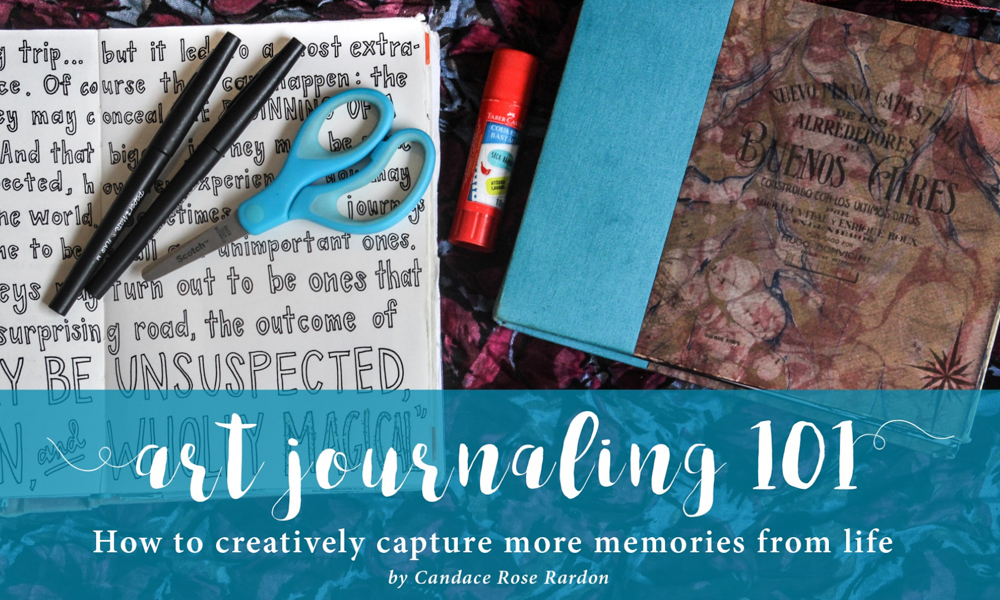Resources

I’ve been traveling and living abroad since 2008, and supporting myself as a freelance writer and illustrator since 2011, so this page is where I’ve brought together all of the recommendations and resources that have helped me over the past ten years.
Firstly, you’ll find a section of my free eBooks available for immediate download. There are also three areas I’m asked the most questions about — how to start travel writing, how to start travel sketching, and finally, how to create a life of travel — so I hope the following links and suggestions will help you make those new experiences happen.
Table of Contents
1. Free eBooks
2. How to start travel writing
3. How to start travel sketching
4. How to create a life of travel
1. Free eBooks & PDFs

Branding for Writers
I first created this eBook for my morning workshop on branding for writers at the Book Passage Travel Writers & Photographers Conference, to help you define your vision, voice, and value as a writer and create a deeper emotional connection with your readers.

Writing for the Web
At past Book Passage conferences, I’ve also taught about writing for the web, covering what stories do well on the web and why, the art and science of pitching, and online outlets that pay above $100 for stories. Learn how to find more homes for your stories online.

Art Journaling 101
This eBook is about another creative practice that brings as much joy to my life as sketching does: art journaling. While I love my sketchbook as a tool for observing the outer world, I have equally come to love my art journal for the way it helps me pay greater attention to the world within.
How to start travel writing
Before I serendipitously typed “Masters in Travel Writing course” into Google one evening in 2010, my only knowledge of the genre of travel writing came from binge-reading Bill Bryson. Once I discovered such a genre exists, however, I swiftly set out on a self-education, learning as much as I could about travel writing — all of which I’ve tried to round up in the following section.
Books
Lonely Planet’s Guide to Travel Writing
Now in its fourth edition, this book by renowned travel writer and editor Don George truly covers everything you need to know about pursuing the profession of travel writing — from crafting a meaningful travel story, to getting published both online and in newspapers and magazines, to honing the essential qualities of a travel writer. Also woven throughout the book are interviews with top editors, writers, and agents, as well as exercises and examples of great articles.
Literary travel anthologies
While you might be more familiar with the myriad guidebooks Lonely Planet publishes, every year they also release a collection of literary travel stories and essays, edited by Don George as well. If you’re looking to write narrative travel stories, these anthologies are a perfect place to immerse yourself in the genre — from The Kindness of Strangers to An Innocent Abroad.
Bay Area-based Travelers’ Tales is another publisher of literary travel anthologies, including annual volumes of The Best Travel Writing and The Best Women’s Travel Writing.
Conferences
In my own experience, getting started in travel writing was a huge exercise in self-education, reading and learning as much as I could on my own — and yet conferences have also played an essential role in helping me become part of the industry. Not only are they a great way to interact with other people in your field, but they’re also a chance to meet your heroes face-to-face — and you never know where those connections could lead.
Book Passage Travel Writers & Photographers Conference
2016 marked the 25th anniversary of this celebrated conference, co-founded by Don George and renowned photographer Robert Holmes and held every August in Corte Madera, California. Lasting four days, each morning is devoted to in-depth workshops on topics such as personal essays, article writing, and writing for the web, and afternoons are organized around multiple panel sessions.
I’ve attended Book Passage as a student and taught there three times as a faculty member, and I can safely say that being part of the conference has changed my life.
While Book Passage is focused on travel writing, if you’re interested in learning more about the in’s and out’s of travel blogging, check out TBEX, short for the Travel Blog Exchange, versions of which take place three times a year in North America, Europe, and Asia. Breakout sessions are organized around the themes of Content, Commerce, and Community, meaning that you can focus your conference experience on the topics you would most like to grow your knowledge in.
Travel Classics Writers Conference
Once you’ve started building your portfolio as a travel writer, this is a third conference to consider, whose model is also different to Book Passage and TBEX. To attend Travel Classics, you’ll need to submit a list of recently published articles and two clips upon registration, but you can also meet one-on-one with commissioning editors from top travel publications such as National Geographic Traveler, Condé Nast Traveler, AFAR, The Wall Street Journal, and American Way.
Workshops and classes
Besides attending conferences, joining a weekend or weeks-long travel writing workshop can be a perfect way to delve into the genre and hone your craft. I’ve divided this section based on workshops available in a few key cities, but you can also start by searching for workshops in your hometown, as well as online.
New York
The Gotham Writers’ Workshop offers both an in-class and online versions of its ten-week travel writing workshop.
San Francisco
At the start of every year, Don George teaches a six-week travel writing intensive at the Corte Madera branch of Book Passage. Similarly, Larry Habegger — another long-time faculty member at the Book Passage conference, and co-founder of Travelers’ Tales — teaches a seven-week travel writing workshop every fall.
London
Veteran UK travel writer Peter Carty offers two versions of his travel writing workshop — either a full-day experience or a set of four nightly workshops. Travellers’ Tales (not to be confused with the aforementioned Travelers’ Tales) also offers a variety of workshops, from a half-day session on travel blogging to a weekend-long masterclass on travel journalism.
After I moved to London to study on my master’s course, I attended the Travellers’ Tales masterclass as well as Peter Carty’s workshop, and I can highly recommend them both.
Paris
Every July, the Paris American Academy holds the Paris Writing Workshop, where Rolf Potts and Dinah Lenney teach the creative nonfiction track, a central focus of which is travel writing.
Online
Seattle-based travel writer Naomi Tomky offers a ten-week online travel writing course through Writers.com called Travel Writing: From Press Trips to Punctured Tires.
Further inspiration
As important as it is to attend workshops and conferences, another key way to grow as a writer is simply to read great writing — as author Dani Shapiro says in her book Still Writing, “fill your ears with the music of good sentences, and when you finally approach the page yourself, that music will carry you…It will exhort you to do better. To not settle for just good enough. Reading great work is exhilarating. It shows us what’s possible.”
A few online travel writing publications I recommend checking out (and pitching stories to):
- BBC Travel
- Compass Cultura
- Roads & Kingdoms
- Vela Magazine
- Wanderlust by GeoEx
- [Wherever] Magazine
- World Hum
And if you’re interested in writing for yourself online, check out these great travel blogs, all of which feature strong storytelling:
- Audrey Scott and Dan Noll – Uncornered Market
- Brenna Holeman – This Battered Suitcase
- Jodi Ettenberg – Legal Nomads
- Kim Dinan – So Many Places
- Matt Kepnes – Nomadic Matt
- Mike Sowden – Fevered Mutterings
- Shannon O’Donnell – A Little Adrift
- Torre DeRoche – The Fearful Adventurer
How to start travel sketching
When I first started travel sketching in January of 2011, I could never have imagined it one day becoming an integral part of my vocation. All I knew was that I loved the traveler it made me into — how it slowed me down, opened up my senses, and helped me connect with people in the places I was visiting.
If you’re looking for a way to create your own unique record of your journeys, I hope the following section will inspire you to bring a sketchbook and watercolors along on your next trip.
Supplies
I’ve written a post for National Geographic’s Intelligent Travel site called Travel Sketching 101, where I outlined the supplies I use and recommend. Here’s another run-through of my supplies, including links to the specific brands and sizes I’ve come to love over the years:
- Pencils – Derwent sketching pencils, specifically with a hardness of HB
- Erasers – extra soft vinyl erasers, such as this Vanish 4-in-1 artist eraser
- Drawing pens – Faber-Castell Pitt artist pens (I prefer the extra fine nib)
- Watercolor kit – Winsor & Newton Cotman Compact Set or their professional-grade Artists’ Watercolor Compact Set
- Brushes – Winsor & Newton Cotman watercolor brushes (I use round sizes 2 and 4), and a synthetic squirrel hair brush by Mimik (round size 6)
- Sketchbook – Canson Montval wire-bound watercolor pads (8.5” x 5.5”) or their hardcover watercolor field book (10” x 7”), as well as Moleskine’s watercolor notebooks (I love their 3.5” x 5” pocket notebook)
- Water container
- Bag (any one will do, really, but I’m a particular fan of Quotable Cards’ 7”-square pouches)
Books
As I’ve discovered through my own journey as a sketch artist, practice may not make perfect but it certainly makes better. I strongly feel there isn’t a more effective way of growing as an artist than by simply spending some quality time with your sketchbook. But the following books might also be of help — providing inspiration as well as as technical advice.
The Art of Urban Sketching: Drawing on Location Around the World
This book was written by Gabriel Campanario, who is the Seattle Sketcher for the Seattle Times as well as the founder of Urban Sketchers (more about them below). In addition to sharing tips and techniques for sketching, it includes over 500 illustrations from artists around the world, giving you a broad idea of sketching styles. He has also released two shorter Urban Sketching handbooks, one on drawing architecture and cityscapes, and another on capturing people and motion.
Drawing People: How to Portray the Clothed Figure
Written by veteran art teacher and illustrator Barbara Bradley, this is the book for you if you’re like me and find people the most difficult subject to sketch. A good friend and fellow artist recommended it to me, and I spent a lot of time last year working my way through it, listening to podcasts while I practiced figure drawing. I’ve still got a long ways to go towards feeling comfortable sketching people live on-location, but this book definitely helped.
Organizations and workshops
As I wrote above in regards to attending writing conferences and workshops and the power of connecting with people face-to-face, I feel similarly about plugging into groups and organizations devoted to sketching. While I often enjoy sketching on my own in order to stay open to serendipitous encounters with those around me, I also love joining up to sketch with fellow artists, as I never cease to be inspired by the way we interpret the same scene in our own unique voice and style.
Moment Sketchers is a global community of sketch artists I founded in 2017, which is dedicated to connecting the world through the power of art. Our monthly sketching challenges (which take place on the first full weekend of every month) are an amazing opportunity not only to share your own world through sketches, but to get to see so many other corners of the globe at the same time.
Moment Sketchers is also an incredibly supportive community, so even if you’re just getting started as a sketch artist, you’ll feel welcomed and at home.
Not long after I started sketching I discovered Urban Sketchers, an international organization devoted to the art and practice of sketching on-location. Not only do they organize a symposium once a year (which in the past has been held in such diverse locations as Singapore, Barcelona, and Paraty, Brazil), but they also offer workshops around the world and have regional chapters in 35 countries, as well as in nearly 20 cities across the U.S.
Many of these regional chapters host monthly ‘sketchcrawls,’ or group sketching events, and are an excellent way to connect with and learn from fellow sketch artists in your hometown.
Another organization that offers a series of video-based workshops is the online art school Sketchbook Skool, which seeks to “inspire creative storytelling through illustrated journaling.”
Each course lasts six weeks and covers topics such as seeing, stretching, storytelling, and playing. While my love for sketching has always been tied to travel, I appreciate how the Sketchbook Skool encourages you to sketch on an everyday basis, drawing inspiration from even the seemingly ordinary objects in your home.
How to create a life of travel
Traveling
While I’ve shared my own favorite travel sites below, I also recommend checking out the resources pages that Jodi of Legal Nomads and Nomadic Matt have put together, both of which are incredibly comprehensive.
Skyscanner and Kayak
When it comes to finding flights, these are two my go-to sites — I especially recommend Kayak for its Explore tool, where you can enter your departure city and view prices for destinations across the globe, which just might inspire you to visit somewhere you hadn’t considered. I’m also a huge fan of Norwegian Air, who offer affordable transatlantic flights between the U.S. and Europe (a one-way flight from Orlando to Oslo for $217 was my favorite find of 2015).
Once I’ve arrived in a new destination, my favorite way to explore the region is overland, especially by train. This site offers in-depth information for train travel across the world (as well as bus services, where traveling by train isn’t possible), covering everything from routes and timetables to conditions once you’re on board.
This is the site I always visit first when I’m considering a new place, especially as it includes great budget accommodation suggestions. There are two other features in particular that I’m a fan of — the “Get out” section that recommends nearby off-beat places, islands, or villages to visit, and as a woman often traveling on my own, I also appreciate the “Stay safe” section, as there are notes about precautions you can take in that city, which neighborhoods to avoid, etc.
Accommodation
I will always be a budget traveler at heart, so my first stops when looking for accommodation are HostelWorld, HostelBookers, and the above-mentioned Wikitravel. When searching for long-term accommodation options, I also look to AirBnb, as some hosts offer discounts on weekly or monthly rentals (I’m especially grateful AirBnb once helped me find this casita to rent on the shores of Lake Atitlán in Guatemala for $620/month).
I couldn’t end this section on traveling recs without mentioning The Adventurists. If you’re looking for an adventure to remember, especially one to undertake with a few friends, this is the company to check out. Whether it’s driving a three-wheeled auto-rickshaw 2,000 miles across India or a vintage Ural motorcycle across Siberia in the heart of winter, the myriad (mis)adventures they offer ensure you’ll have no shortage of stories to impress your grandchildren with one day.
Working abroad
In my own experience, working abroad was how I found my feet as a traveler. Not only did it mean I didn’t have to save up a huge amount before I left, as I would be earning once I arrived in each new country, but it was also a great way to get to know the culture on a deeper level. The following are a couple of ideas of how I found work opportunities around the world.
My first experience of working overseas was made possible by a work-exchange company called BUNAC, which was once short for British Universities North America Club and is now owned by STA Travel. Although the scheme I was able to work in the UK through has since been retired, they still offer a wide range of opportunities, from an Intern in Britain program, to working holiday packages in Australia, New Zealand, and Ireland (see more about these below), to a marine conservation internship in Mexico.
Working Holiday visa programs
Another opportunity I didn’t learn about until I started traveling is the working holiday visa, a residence permit that is often good for a year and available to travelers ages 18-30 (or in some cases, 35). For Americans, the available countries are Australia, Ireland, New Zealand, Singapore, and South Korea, but Canadians and other nationalities have even more opportunities. Wikipedia has a comprehensive list of working holiday visa schemes listed here.
Volunteering abroad
If you’re looking to volunteer while traveling, this is one of the best sites to begin your search with. The site’s founder, Shannon O’Donnell, is passionate about helping travelers invest their time and resources in community-based organizations that have real lasting local impact. To do so, she has put together a comprehensive database of volunteering opportunities around the world, as well as a list of social enterprises and small businesses to support along the way.
WWOOF (World Wide Opportunities on Organic Farms)
Another option for volunteering is WWOOF, a network of organic farms in more than 100 countries. The basic premise of “wwoofing” is that volunteers spend a few hours a day helping out with small tasks in exchange for accommodation and food.
While many of the hosts are looking for people to help with quite traditional farming tasks, you never know what opportunities you’ll stumble across through WWOOF — I once spent three weeks on a black pearl farm in French Polynesia. Similarly, WorkAway is also a great place to find free exchange opportunities around the world.
How else can I help?
If I can help with any other questions, get in touch at [email protected], and if you’d like to receive free updates from “The Art of Finding Home,” you can subscribe in the box below.
Instagram: @candacerardon
Twitter: @candacerardon
Thank you for being here — I can’t wait to explore the art of finding home with you.


